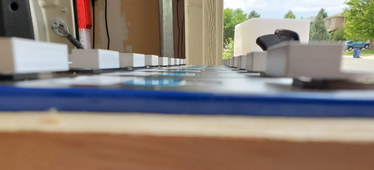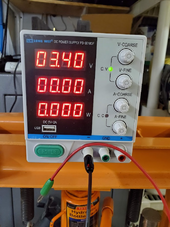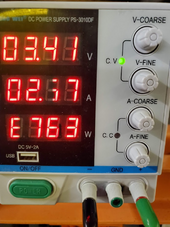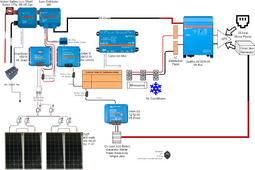Since I was remiss in documenting my 12 volt RV build, I'll begin documenting the new 48 volt build from the day that I received the cells.
The RV will be a 2025 Northwoods Desert Fox 27FS. This is a four season bumper pull toy hauler with a GVWR of 12,800 Lbs with a theoretical cargo capacity of 3,858 Lbs. My current toy hauler has a GVWR of 11,000 Lbs so this isn't a huge step up. The Desert Fox is on order, with an expected delivery of late August 2024. I chose this trailer because of Northwood's quality. The chassis is certified for off-road. No crappy Lippert frame on this beast. I requested a couple of deletions from the factory to make sure there is plenty of open space on the roof. It should come with 400 watts of PV on the roof installed at the front. I'll leave that in place for now and use the power from it to charge the OEM 12 volt battery on the tongue.
Designing a system for a trailer that I don't have is a little stressful. I found a 2024 model that they allowed me to crawl on/in/under and that gave me enough of a warm fuzzy on dimensions and obstructions that I think I'll be OK. (Famous last words
 )
)
Why 48 volts? If you've read any of my past posts where the question of system voltage for an RV comes up you'll see that I almost always recommend sticking with 12 volts. For an RV, a 12 volt system is less complex, easier to understand and less expensive.
The main reason for going 48 volts is that I'm planning to put at least 1720 watts of PV on the roof. 2s2p of 430watt panels. A 48 volt system (instead of 12 volt) allows me to use a less expensive solar charge controller or depending how it's wired, just one solar charge controller.
The secondary reason is that I can put 16 cells in series (16s) and have explicit monitoring of all of them (as opposed to 2s8p) and have inverter communication with the BMS. No daisy chaining of communication or power cables.
Saving money by being able to use smaller cabling is not a factor in my decision to go 48 volts. Any savings from smaller cabling is easily eaten up by having to install step up and step down devices. I'm planning to wire the system as if it was a 12 volt system, mainly because I have plenty of that size cable leftover from my prior build.
The RV will be a 2025 Northwoods Desert Fox 27FS. This is a four season bumper pull toy hauler with a GVWR of 12,800 Lbs with a theoretical cargo capacity of 3,858 Lbs. My current toy hauler has a GVWR of 11,000 Lbs so this isn't a huge step up. The Desert Fox is on order, with an expected delivery of late August 2024. I chose this trailer because of Northwood's quality. The chassis is certified for off-road. No crappy Lippert frame on this beast. I requested a couple of deletions from the factory to make sure there is plenty of open space on the roof. It should come with 400 watts of PV on the roof installed at the front. I'll leave that in place for now and use the power from it to charge the OEM 12 volt battery on the tongue.
Designing a system for a trailer that I don't have is a little stressful. I found a 2024 model that they allowed me to crawl on/in/under and that gave me enough of a warm fuzzy on dimensions and obstructions that I think I'll be OK. (Famous last words
Why 48 volts? If you've read any of my past posts where the question of system voltage for an RV comes up you'll see that I almost always recommend sticking with 12 volts. For an RV, a 12 volt system is less complex, easier to understand and less expensive.
The main reason for going 48 volts is that I'm planning to put at least 1720 watts of PV on the roof. 2s2p of 430watt panels. A 48 volt system (instead of 12 volt) allows me to use a less expensive solar charge controller or depending how it's wired, just one solar charge controller.
The secondary reason is that I can put 16 cells in series (16s) and have explicit monitoring of all of them (as opposed to 2s8p) and have inverter communication with the BMS. No daisy chaining of communication or power cables.
Saving money by being able to use smaller cabling is not a factor in my decision to go 48 volts. Any savings from smaller cabling is easily eaten up by having to install step up and step down devices. I'm planning to wire the system as if it was a 12 volt system, mainly because I have plenty of that size cable leftover from my prior build.
Last edited:












